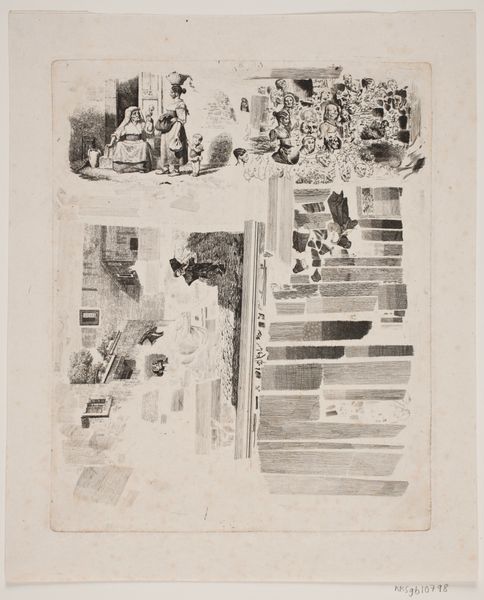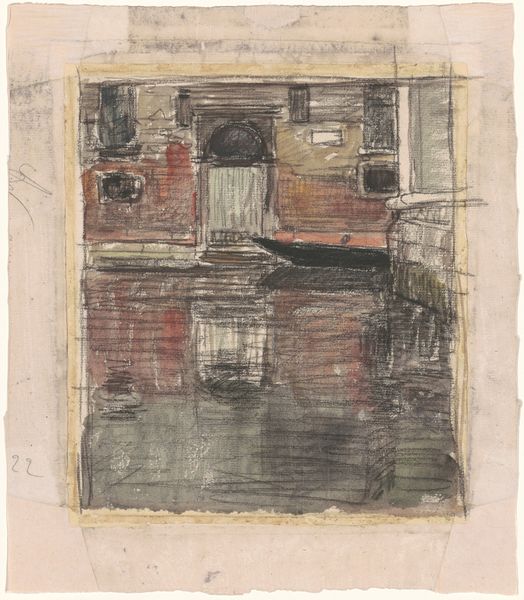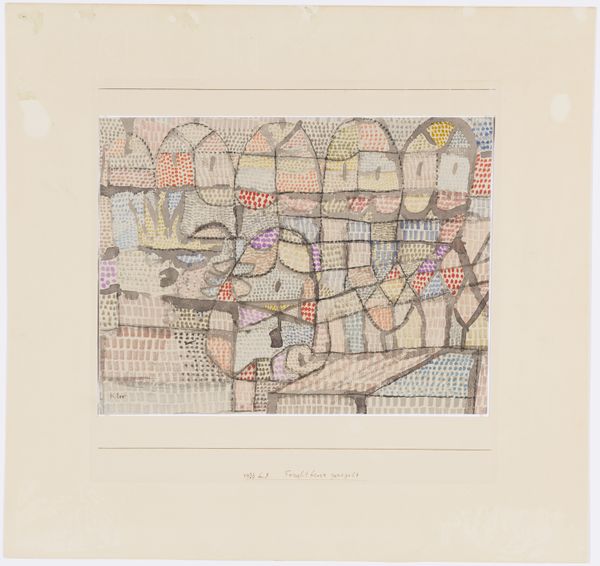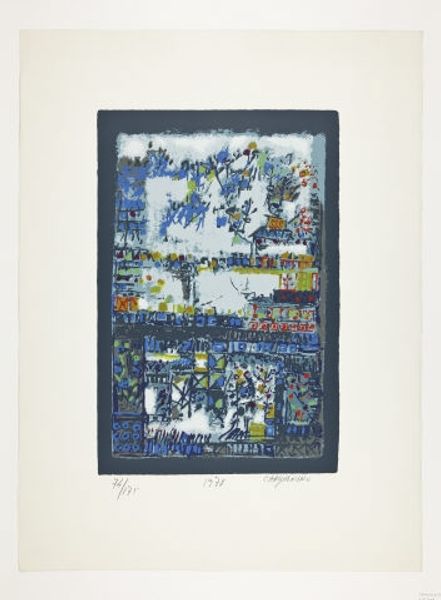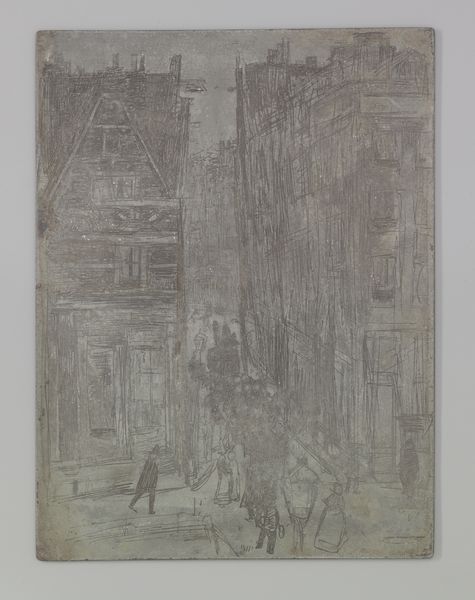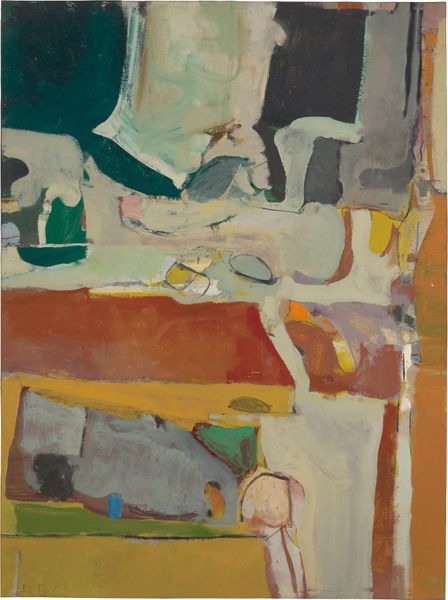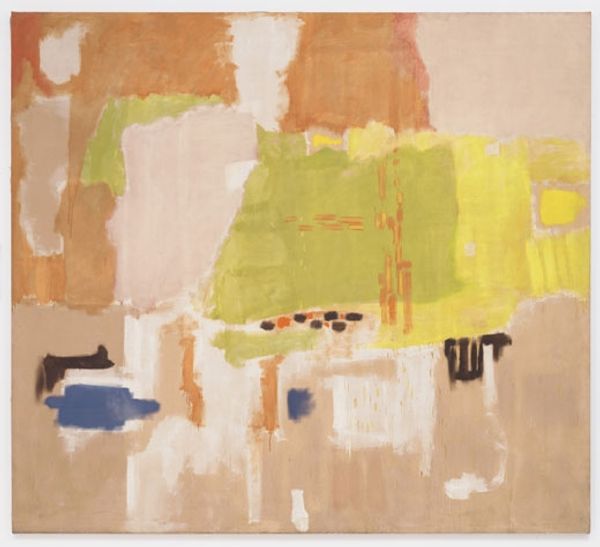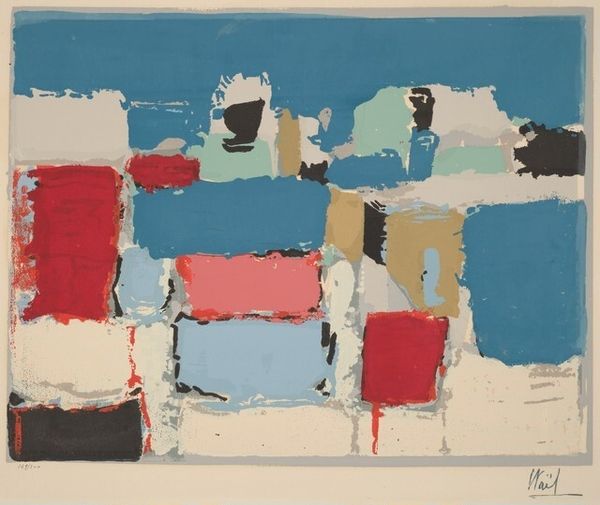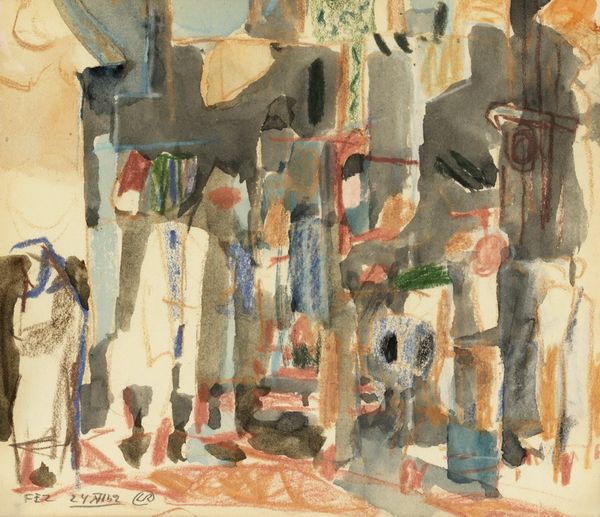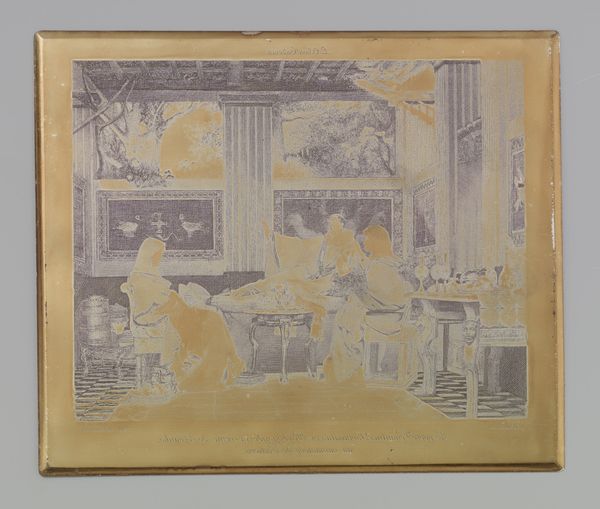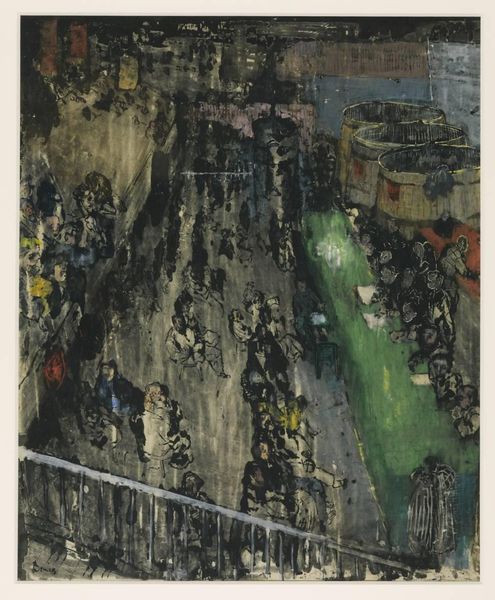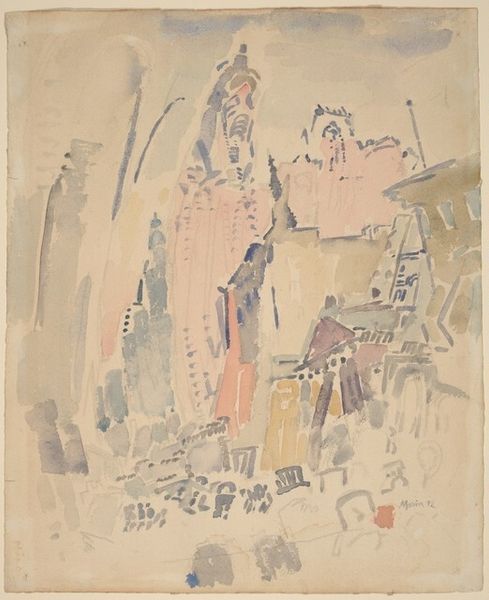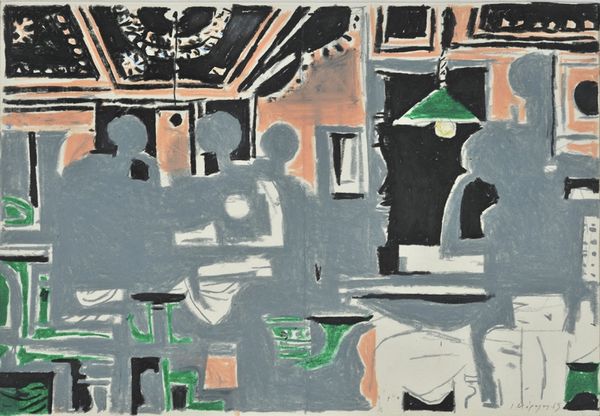
watercolor
#
water colours
#
impressionism
#
figuration
#
watercolor
#
cityscape
#
watercolor
Copyright: Alexis Gritchenko,Fair Use
Editor: Here we have Alexis Gritchenko's watercolor "Untitled." The composition is primarily light washes, suggesting a bustling cityscape. I'm curious, looking at it now, what does it evoke for you? Curator: This piece, especially considering Gritchenko’s wider artistic practice, brings to mind questions around the production and distribution of imagery itself. As a watercolor, it seemingly prioritizes ease and portability – qualities valued by artists documenting rapidly changing urban landscapes. It seems to prioritize capturing an immediate impression, over rendering details with accuracy. Editor: That’s interesting, I was initially drawn to the sort of ‘hazy’ visual effect created with watercolor and paper. How does this immediacy factor into the social or cultural moment it was created? Curator: It begs us to consider the accessibility of art-making itself. Watercolors were more easily sourced than oils. Paper more versatile than canvas. Perhaps this implies a shift towards democratizing art production. Can the medium itself challenge existing art historical narratives? Editor: So the material, its accessibility and ease of use, speaks to a possible broadening of who gets to make art, and maybe what is considered art in the first place? Curator: Precisely. Looking at the repeated figures within the city, rendered with such economy of line and detail, prompts questions about class, labour, and even the consumption of leisure. Does the artist give dignity and place to those that would be excluded from “high” art? Editor: That makes me think about who the intended audience might have been and how the setting plays a role, beyond just visually recording the cityscape. I hadn’t considered those layers before! Curator: Considering the socio-economic context surrounding both the production and the consumption of art is always crucial.
Comments
No comments
Be the first to comment and join the conversation on the ultimate creative platform.
